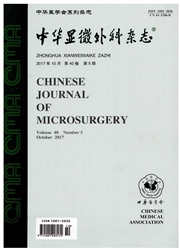

 中文摘要:
中文摘要:
目的探讨神经发育音猬因子(SHH)诱导恒河猴骨髓间质细胞(BMSCs)向神经样细胞分化的丝裂原活化蛋白激酶信号分子变化。方法密度梯度离心法分离培养恒河猴骨髓干细胞,应用Western—blot方法检测SHH诱导细胞内信号蛋白变化,免疫组化方法观察丝裂原活化蛋白激酶(MAPK)特异性抑制剂对细胞诱导过程的影响。结果SHH诱导恒河猴BMSCs分化为神经样细胞分化过程,细胞内激酶p38在加入诱导液5min后即被激活,随着时间的延长持续升高,1h达到最高峰,诱导前、后p38的总量未见变化;而磷酸化的ERKI/2被抑制,5min时即开始减少,在2h内逐渐降低,诱导前、后ERKI/2的总量未见变化。结论MAPK激酶系统参与SHH诱导恒河猴MSCs分化为神经样细胞分化过程,p38被激活,而ERK被抑制。
 英文摘要:
英文摘要:
Objective To investigate the role of p38 and ERK1/2 during rhesus monkeys mesenchyreal stem cells differentiated into neuron-like ceils. Methods To induce the neuronal phenotype, rhesus monkeys mesenchymal stem cells were maintained in sub-confluent cultures in serum-contain medium supplement with Sonic hedgehog. Western blot analysis the change of p38 and ERK1/2 during rhesus monkeys mesenchymal stem cells differentiated into neuron-like cells. Under transmission and scanning electron micro- scope, uhra-structure of the differentiated cell were observed. Results During BMSCs differentiated into neuron-like cells by SHH, Mitogen-aetivated protein kinases (MAPK) involved in their signal transduction, p38 was activated and ERK1/2 was inhibited. P38 inhibitor SB203580 increased induced differentiation time compared with normal induced cells, and inhibited neurite outgrowth. Conclusion Activation of p38 and inhibition of ERK was impacted on differentiation into neuron-like cells from rhesus monkeys mesenchymal stern cells induced by Sonic hedgehog, which may has potential application on neuroprotection of stem cells in Nervous system diseases
 同期刊论文项目
同期刊论文项目
 同项目期刊论文
同项目期刊论文
 期刊信息
期刊信息
